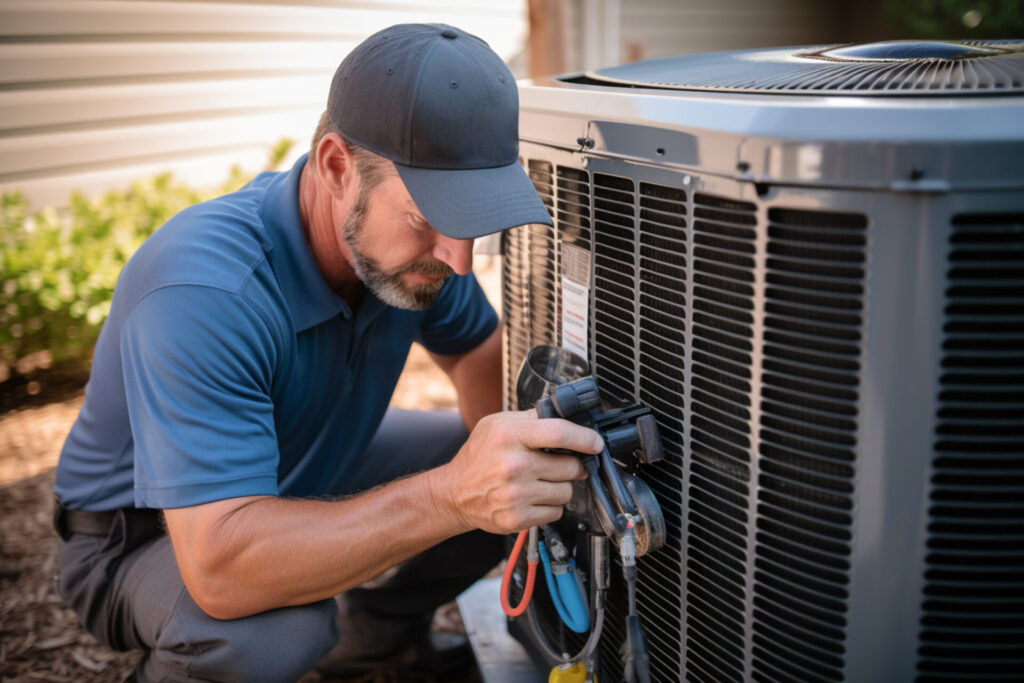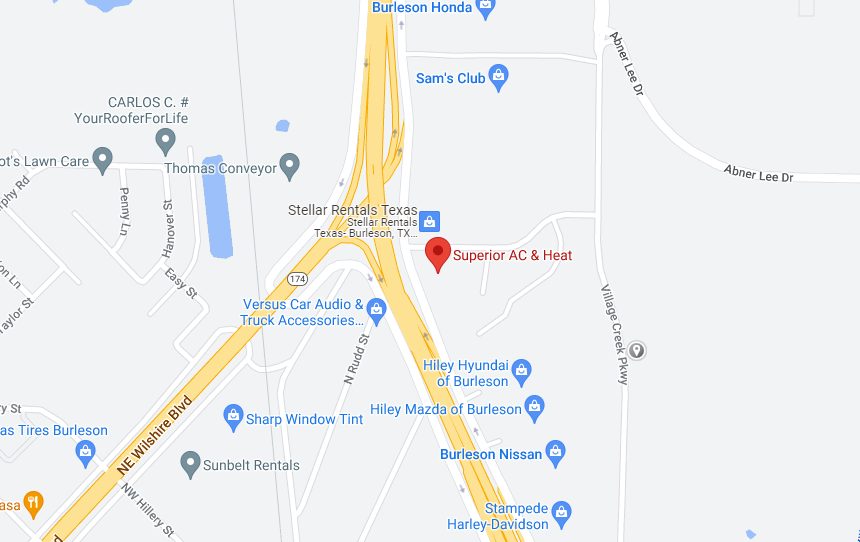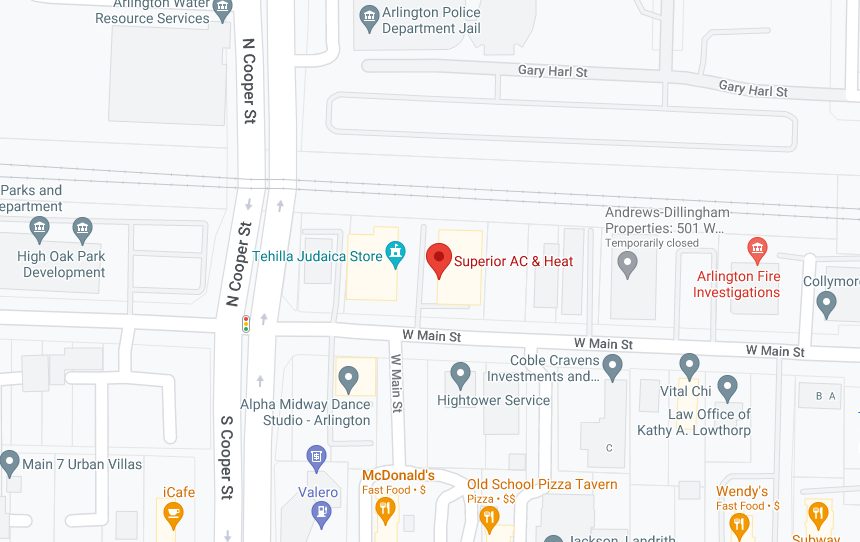If your air conditioner is running but your home still feels warm, low refrigerant might be the issue. Knowing the signs can help you avoid serious AC damage and keep your comfort from slipping away.
Refrigerant is what makes your air conditioning system capable of cooling your home. When there’s not enough of it due to a leak or slow loss, your AC can’t remove heat from your indoor air effectively. That’s when you start noticing poor cooling, rising energy bills, and frustrating performance issues. At Superior AC & Heat, we help homeowners in Burleson, Arlington, and nearby cities recognize the warning signs and get the problem fixed before it leads to bigger trouble.
Signs Your AC Might Be Low on Refrigerant
An air conditioner low on refrigerant won’t always quit completely. Instead, it often shows up in several small but noticeable ways. These symptoms may seem minor at first, but they usually get worse if not addressed. Some of the most common signs include:
Your home may start to feel warmer than the temperature set on your thermostat, even though your system is running. This happens because the refrigerant isn’t doing its job of absorbing and transferring heat, leaving your space stuck at an uncomfortable level.
Another sign is the system running constantly without reaching the set temperature. Refrigerant is a crucial part of the heat exchange process. Without enough of it, your AC has to work harder and longer to try to cool your home, which adds strain and raises your electric bill.
Ice forming on the refrigerant lines or around the evaporator coil is also a strong indicator. This can seem confusing since you’re dealing with heat—but the refrigerant gets so cold, and when levels are low, the pressure drops and ice builds up. That frozen coil prevents airflow and makes cooling even worse.

Sometimes, homeowners hear a hissing or bubbling sound coming from the outdoor unit. These noises can be signs of refrigerant escaping from the system through a leak. If you hear either of these sounds, shut off your system and call for professional help immediately.
Lastly, your AC may short cycle—turning on and off rapidly without completing a full cooling cycle. This not only prevents your home from reaching the right temperature but also causes unnecessary wear on your equipment.
What Causes a Refrigerant Leak in the First Place?
Most refrigerant leaks happen because of wear and tear over time. Your AC system is made up of copper lines, coils, valves, and fittings—all of which are vulnerable to corrosion, vibration, or physical damage. Texas weather doesn’t help either, with extreme heat and moisture accelerating wear on outdoor components. If your system is older, small leaks may develop in multiple spots.
Leaks can also result from poor installation or improper service, such as overtightened fittings or damaged tubing during past repairs. That’s why it’s so important to have your AC serviced by trained professionals who know how to handle refrigerant safely and correctly.
Can You Add Refrigerant Yourself?
This is one of the most common questions homeowners ask—and the answer is no, not safely or legally. Refrigerant handling is regulated by the EPA and requires certified technicians. It’s not just about topping off a fluid; refrigerant systems are pressurized and require specific tools, skills, and safety measures.
DIY attempts often lead to overcharging, incorrect pressure levels, or further leaks. These mistakes can damage your system and void your manufacturer’s warranty. If you suspect a refrigerant issue, your best move is to schedule professional service.
Preventing Future Refrigerant Issues
Once your refrigerant level is corrected and the leak is repaired, the next step is prevention. Regular maintenance keeps your AC running smoothly and gives your technician a chance to catch small issues before they become expensive problems.
We recommend twice-yearly checkups—once in the spring and once in the fall. During these visits, we check refrigerant pressures, clean coils, inspect the system for potential leaks, and ensure your AC is working at peak performance.
Enrolling in a preventive maintenance plan is one of the easiest ways to keep refrigerant levels where they need to be—and avoid surprise breakdowns during the hottest days of summer.
Learn What Your AC’s Refrigerant Type Is
Not all air conditioning systems use the same refrigerant. If your system was installed more than 10 years ago, it may use R-22, which is no longer produced in the U.S. due to environmental regulations. Even systems using R-410A are being phased out as new, more efficient options like R-32 or R-454B take their place.
If your system uses a refrigerant that’s no longer widely available, the cost of repairs may be significantly higher. Our team can help you weigh the cost of continued service against the benefits of upgrading to a new system with modern refrigerant that’s better for your budget and the environment.
Why Low Refrigerant Is a Serious Problem
It’s easy to think topping off refrigerant is a quick fix. But if your system is low, it means something else is going on—usually a leak. Ignoring it means you’ll keep losing refrigerant, forcing your system to work harder, lose efficiency, and eventually break down entirely. That kind of stress shortens your system’s lifespan and can lead to expensive repairs like compressor failure.
If you’ve already had refrigerant added multiple times, it’s time to find out where the leak is and have it repaired. A permanent fix is always better than a temporary recharge.
How We Help Fix Low Refrigerant Issues
At Superior AC & Heat, we don’t just refill refrigerant—we find the reason it’s low and fix it properly. Our technicians perform a full diagnostic to confirm the issue, check system pressures, and look for leaks. If a leak is detected, we’ll discuss your options, whether that’s a simple line repair, a coil replacement, or a discussion about long-term system health if the damage is severe.
We recharge your system with the correct refrigerant type and amount, and then test everything to make sure it’s cooling the way it should. We also help you understand how to maintain your system and prevent future issues.
If your AC still uses R-410A or other older refrigerants, we’ll talk with you about availability, cost concerns, and whether an upgrade might be the smarter choice.
Get Refrigerant Help From Pros Who Know Texas Heat
In Burleson, Arlington, and the surrounding areas, a struggling AC isn’t something you can afford to ignore—especially during peak summer heat. If your system seems off, runs nonstop, or can’t keep up with your cooling needs, don’t assume it’s just the weather.
Call Superior AC & Heat to schedule an inspection. We’ll help you figure out if low refrigerant is to blame and get your system cooling properly again—quickly, affordably, and with no guesswork. Because when it’s this hot out, your AC shouldn’t be giving you the cold shoulder.




